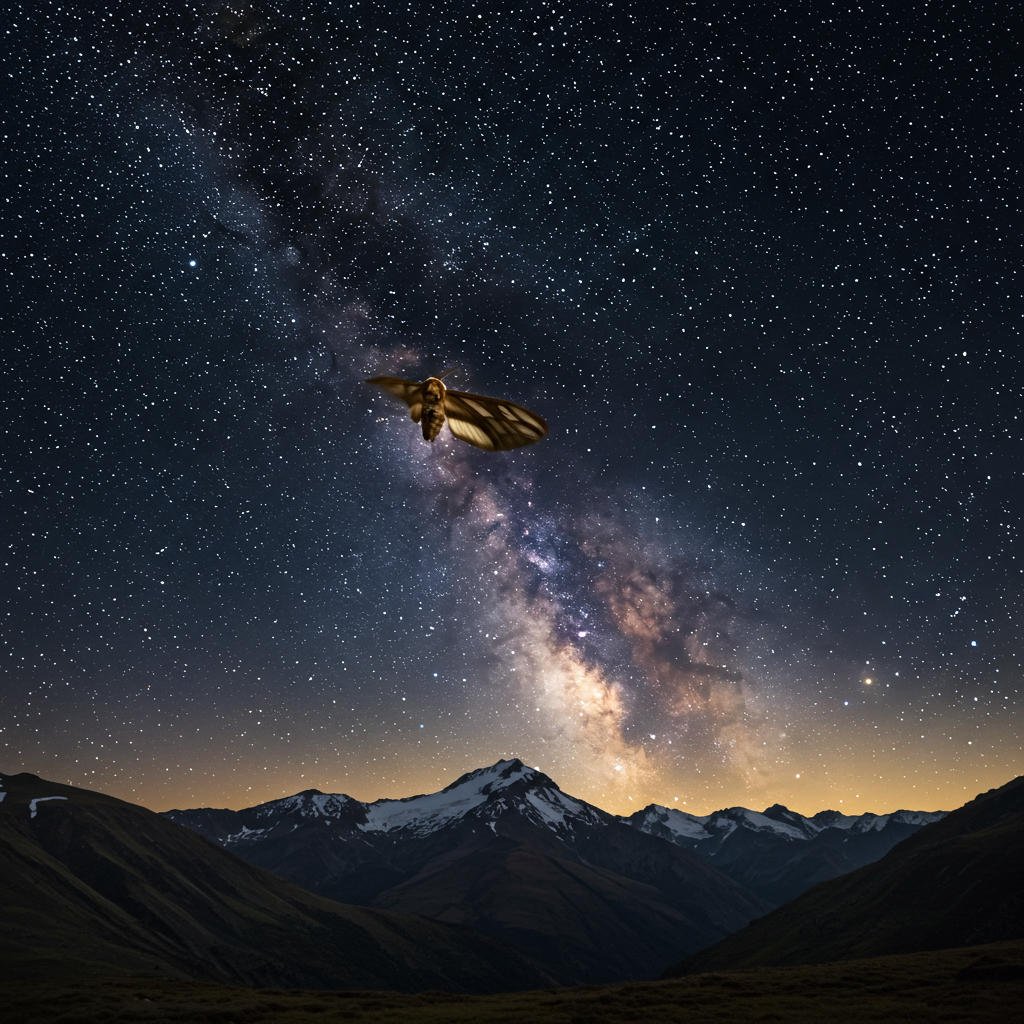Each spring, a truly remarkable natural phenomenon unfolds in southeastern Australia: billions of Bogong moths ( Agrotis infusa ) take flight. Driven by the need to escape the sweltering lowland heat, these small insects embark on an epic migration, traveling roughly 600 miles to the cooler, high-altitude caves of the Australian Alps. What makes this journey even more astonishing is that a new generation of moths undertakes this arduous trip without any guidance from their parents.
For years, scientists puzzled over how these tiny, seemingly nondescript brown moths, only about an inch long, managed to navigate such vast distances to specific cave locations. Previous research had established that Bogong moths possess an internal compass sensitive to Earth’s magnetic field, a tool known to aid orientation in various animals. However, researchers suspected this magnetic sense alone wasn’t sufficient for precisely navigating hundreds of miles, especially over varied terrain and through the night sky.
Now, groundbreaking research published in the journal Nature appears to have cracked a significant piece of this navigational mystery. Scientists have discovered that Bogong moths rely on the starry night sky as a crucial guide for their long-distance flight.
First Insect Known to Navigate by Stars
This discovery is particularly noteworthy as it marks the first time an insect species has been scientifically documented using stellar navigation for extensive travel. While birds and even humans have been known to navigate by stars over great distances, and some insects like dung beetles use the light of stars for shorter routes, applying this complex skill over 600 miles is unprecedented in the insect world.
“The big thing that we’ve discovered here is a very, very tiny animal like a moth, with a very small nervous system, a very small brain, very small eyes is able to interpret the starry night sky and work out a direction to fly in,” explained Eric Warrant, a professor of zoology at Lund University in Sweden and a co-author of the new study.
Andrea Adden, a postdoctoral researcher who contributed to the work, echoed this, stating, “The bogong moth, as far as we know, is the first one that has been described to navigate using the stars.”
Unlocking the Secret: Experiments in a Flight Simulator
To uncover this remarkable ability, researchers developed ingenious experiments. They captured wild Bogong moths and placed them inside a small, barrel-shaped “flight simulator.” Within this device, the moths were suspended on a thin tungsten rod, allowing them to flap their wings and rotate freely as if in natural flight.
To isolate the moths’ visual navigation, the scientists created a magnetic vacuum around the simulator, effectively disabling the insects’ internal magnetic compass. Above the suspended moths, they projected an image of the night sky, which could be adjusted and rotated.
The results were compelling. As researchers rotated the projected sky, the moths consistently shifted their flying patterns, attempting to maintain a stable direction relative to the moving stars. David Dreyer, another Lund University researcher on the team, noted, “It can rotate freely. It can choose any direction it wants to fly to.”
The ultimate proof came when scientists projected a randomized, broken-up sky pattern into the simulator. “The animals were totally disoriented,” Dreyer stated. “That was, for us, like the final proof, more or less, that they actually indeed use the stars for navigation.”
Neural Evidence and What Moths Might See
Further experiments delved into the moths’ brains. By inserting a tiny glass tube into a neuron and recording electrical impulses, researchers found that specific neurons in the moths’ visual processing regions became highly active when organized patterns of the night sky were displayed, particularly those corresponding to the moth’s migratory direction (south). These neurons did not react strongly to randomized sky patterns, confirming a neural response linked to processing the starry sky. This marks the first time neurons specifically responsive to the starry sky have been identified in an insect brain.
Given their small pupils, Bogong moths likely only perceive the brightest celestial cues. Researchers suspect they might utilize the broad structure of the Milky Way, suggesting that the moths “probably see the Milky Way much more distinctly and brightly than we do,” according to Warrant.
While the starry sky provides the primary compass for long-distance flight, researchers believe the moths integrate other senses. For the final approach to the specific caves, they likely switch to using their sense of smell, detecting an “olfactory beacon”—an odor compound emanating from the caves, possibly similar to rotting meat—to guide them to their destination.
Significance for Conservation
The study underscores the incredible complexity of insect navigation, highlighting that insects’ sensory worlds may be far richer than previously imagined. Biologist Pauline Fleischmann noted that the moths possessing multiple navigation systems (stellar and magnetosensory) provides crucial redundancy, allowing them to navigate even when conditions (like cloudy nights) make one cue unavailable.
This research holds vital implications for the conservation of Bogong moths. The species is currently listed as endangered by the International Union for Conservation of Nature (IUCN), facing dramatic population declines exacerbated by factors including drought, bushfires, climate change, and agricultural practices.
Knowing that these moths rely on vision to interpret the starry sky for navigation points to light pollution as a significant threat. Artificial lights in urban areas can disorient the moths, potentially trapping them in cities instead of allowing them to complete their journey. Understanding this reliance can inform critical protection approaches. Protecting the Bogong moth is also essential for preserving the entire Alpine ecosystem, which depends on them as a key food source.
As Ken Lohmann, a professor studying animal navigation who was not involved in the research, commented, the ability of a moth with a relatively small brain to maintain a heading over such tremendous distances “just highlights the ingenuity of natural selection.” This new discovery not only reveals a unique adaptation but also opens doors for deeper understanding of animal navigation systems across the board, potentially leading to innovative conservation strategies.




